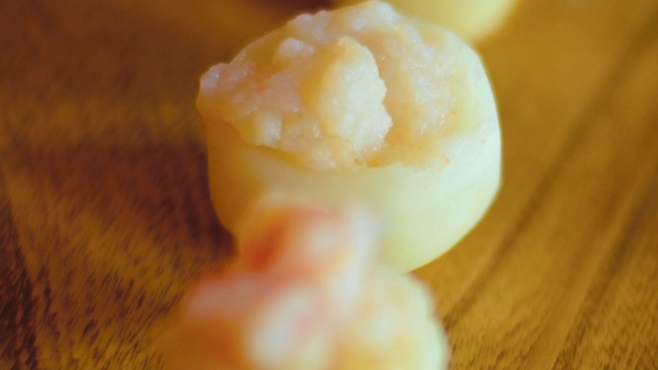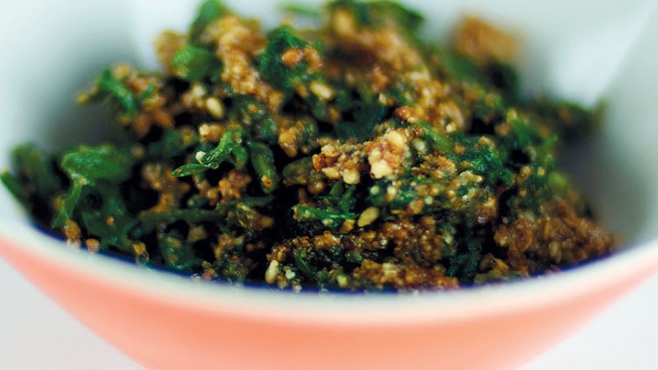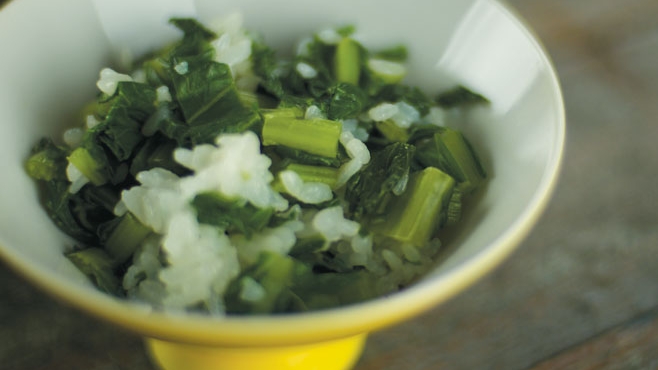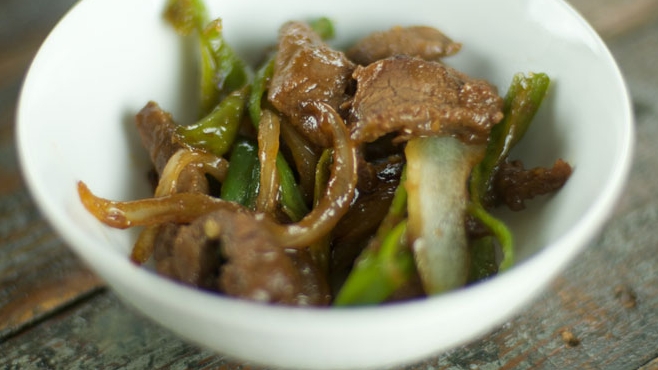Cooking with Japanese Vegetables
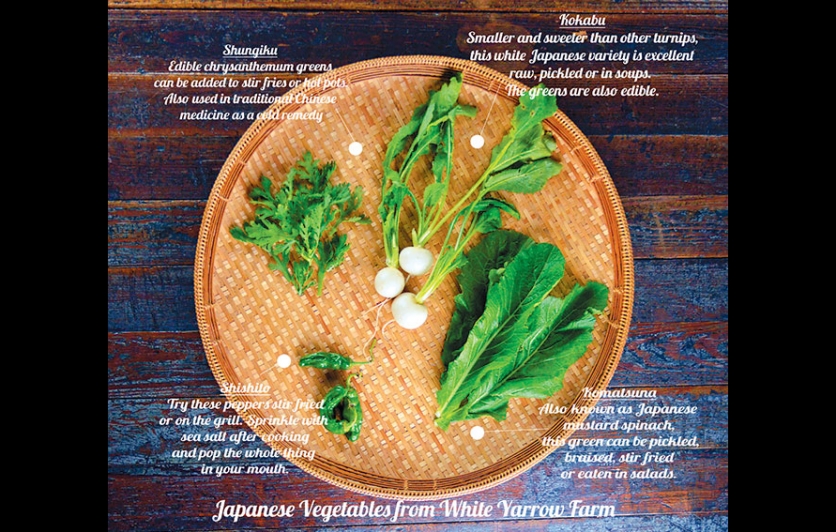
Beautiful produce, clean flavors, the excitement and energy of trying new and unfamiliar recipes—all of this went into the testing of these great recipes. What follows is a wonderful foray into Japanese cuisine inspired by the Japanese vegetables grown at White Yarrow Farm. Forget everything you know about fast-food sushi and enjoy this celebration of simple ingredients and seasonal produce.
Ingredients
• Dashi: A broth made from kombu (dried kelp) and dried tuna shavings (bonito or katsuobushi). Dashi is the base flavor of many Japanese recipes, providing a rich umami taste.
Pre-made dashi, often sold in granules like an instant soup base, can be hard to find in the Michiana area. If you cannot buy it at your local Asian grocery, you can make your own dashi by soaking and then simmering a couple of pieces of kombu, reducing the mixture by boiling for about 10 minutes, then adding about 2 cups of tuna shavings, simmering another 10 minutes and straining. (Kombu and dried tuna flakes are available at Whole Foods Market in Mishawaka, Indiana).
• Kokabu: These tender, sweet turnips appear in three different forms in these recipes. You will end up using the leaves, flesh and peel of the turnips.
• Mirin: A sweet rice wine used for cooking. You can substitute white wine with the addition of a pinch (less than ⅛ teaspoon) of sugar.
• Red Miso: Miso is a paste of fermented soybeans widely used in Japanese cooking to add a rich and salty taste to soups, sauces and other foods. Red miso is stronger in flavor than white varieties.
• Sake (nihonshu in Japan): An alcoholic beverage made of fermented rice. We recommend buying a bottle at your favorite liquor purveyor and serving the remainder after cooking, with your meal. Or you can substitute mirin or sweet sherry to obtain similar results in these recipes.
• Shishito peppers: Small, thin-skinned peppers, eaten green or red. Most are mild, but about 1-in-10 shishito peppers is spicy.
• Shungiku: Edible chrysanthemum greens from the Aster family. Use spinach as an alternative.
Sources
All vegetables can be purchased from White Yarrow Farm (Marcellus, Michigan) from their booth at the Goshen Farmers Market in Goshen, Indiana. Dashi, kombu, dried tuna shavings, mirin and miso can be found at many Asian groceries or natural foods stores. Sake is available in some groceries and most liquor stores.



